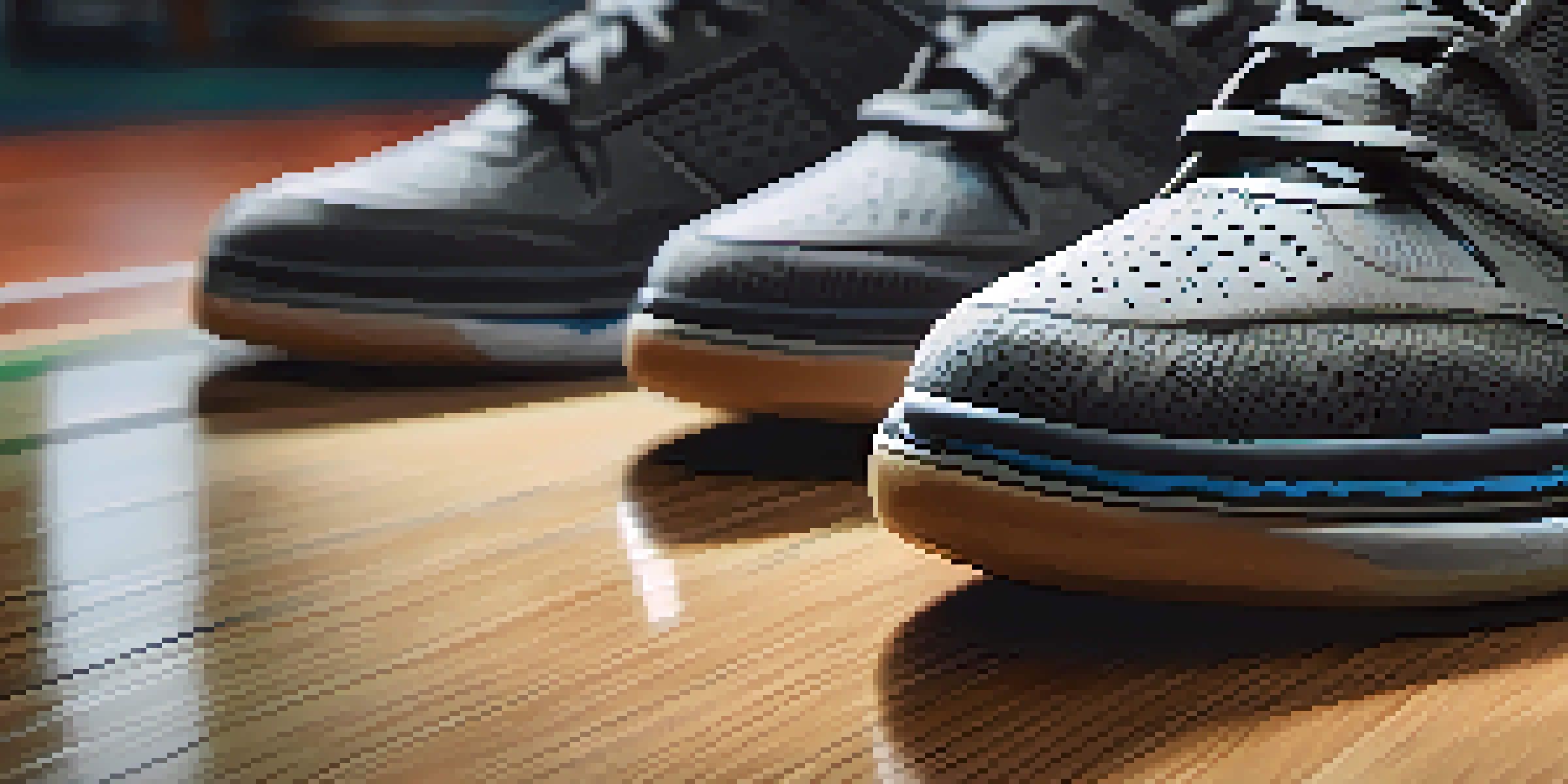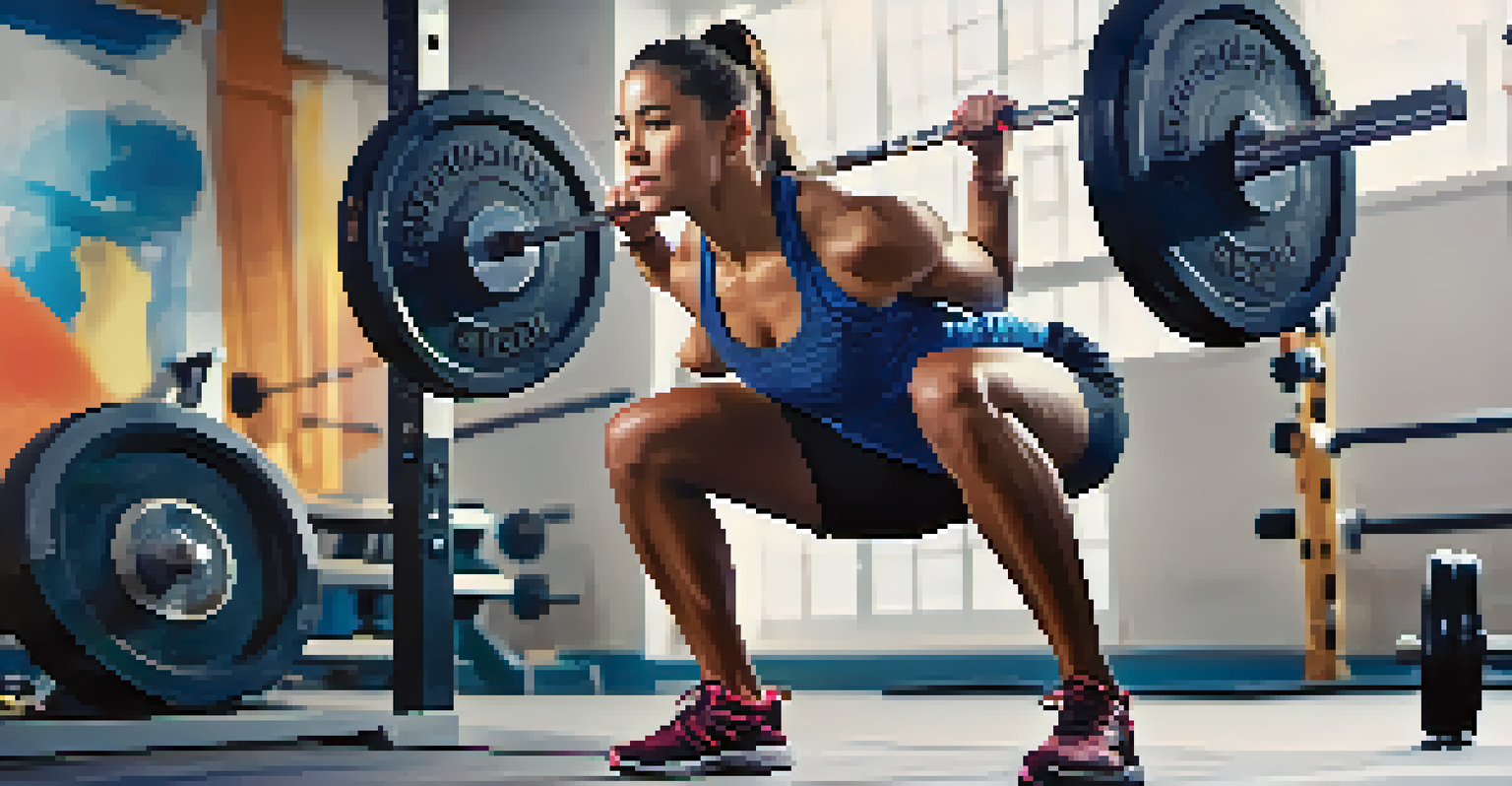The Importance of Regularly Checking Your Lifting Shoes

Why Lifting Shoes Matter for Performance and Safety
Lifting shoes are essential gear for anyone serious about strength training. They provide the necessary support and stability, ensuring you lift efficiently and safely. Without the right shoes, your performance can suffer, leading to poor technique and even injury.
The shoes that you wear can greatly affect your performance and safety when lifting.
Imagine trying to lift heavy weights while wearing running shoes. The cushioned soles can cause instability, making it harder to maintain proper form. This not only affects your lifts but also increases the risk of accidents, which is why checking your lifting shoes is crucial.
Regular checks help ensure your shoes are still in good condition, offering the right support. By prioritizing your footwear, you’re investing in your performance and safety—two essential aspects of any lifting regimen.
Signs Your Lifting Shoes Need Replacement
Over time, even the best lifting shoes can wear out. Look for signs such as excessive wear on the sole, loss of arch support, or any visible damage. If your shoes start feeling less supportive, it’s a clear indication that it’s time for a replacement.

Another telltale sign is discomfort during your lifts. If you notice any pain or instability in your feet or ankles, your shoes might not be providing the support you need. Ignoring these signals can lead to more significant issues down the line.
Lifting Shoes Enhance Performance
Wearing the right lifting shoes improves stability and technique, reducing the risk of injury during strength training.
Don’t wait until your shoes are completely worn out. Regularly inspecting them can save you from injury and ensure that you’re always lifting at your best.
How to Care for Your Lifting Shoes
Proper care for your lifting shoes can extend their lifespan significantly. Start by keeping them clean; dirt and sweat can break down materials faster than you think. A simple wipe down after each use can make a big difference.
Investing in the right gear is investing in your health and performance.
Additionally, store your shoes in a dry, cool place to avoid any damage from moisture or heat. Avoid leaving them in your car or damp areas, as this can warp the shape and integrity of the shoe.
Lastly, consider rotating between multiple pairs if you lift frequently. This not only gives your shoes a break but also allows each pair to dry out and maintain their structure.
Choosing the Right Lifting Shoes for Your Needs
When selecting lifting shoes, consider your lifting style and foot type. Different shoes offer varying levels of support and stability, so it’s essential to find a pair that matches your specific needs. A good fit can make all the difference in your performance.
For example, Olympic lifters often prefer shoes with a raised heel for better squat depth, while powerlifters may opt for flat-soled shoes for maximum stability. Understanding these differences can help you make a more informed choice.
Signs You Need New Lifting Shoes
Look for discomfort, wear on the sole, or loss of support as indicators that your lifting shoes need replacement.
Trying on shoes before purchasing is crucial. Take the time to walk around and mimic your lifting movements to ensure they support your technique and comfort.
The Role of Fit in Lifting Shoe Performance
A proper fit is vital for any lifting shoe. If your shoes are too tight, they can restrict blood flow and cause discomfort, while shoes that are too loose can lead to instability. Aim for a snug fit that allows for some wiggle room in your toes.
Many athletes measure their feet regularly, as foot size can change over time. This ensures that you’re not working out in shoes that no longer fit properly. Remember, the right fit can enhance your performance dramatically.
If you’re unsure about fit, consider visiting a specialty store where staff can offer guidance. They can help you find the best fit based on your foot shape and lifting style.
The Impact of Lifting Shoes on Injury Prevention
Lifting shoes play a significant role in injury prevention. They provide the necessary support and structure, helping to maintain proper alignment during lifts. This is especially important for heavy lifting, where even minor deviations can lead to injuries.
For instance, a stable shoe can prevent ankle rolling during squats or deadlifts, reducing the risk of sprains. By ensuring your shoes are in good condition, you’re taking proactive steps to protect yourself from potential injuries.
Proper Shoe Care Extends Longevity
Caring for your lifting shoes by keeping them clean and storing them correctly can significantly prolong their lifespan.
Regular checks and timely replacements of your lifting shoes can be crucial for long-term lifting health. With the right footwear, you’re not only lifting better but also lifting safer.
Conclusion: Prioritize Your Lifting Shoes for Better Lifts
In conclusion, regularly checking your lifting shoes is essential for maintaining performance and safety. From assessing wear and tear to understanding the right fit, these small efforts can have a significant impact on your lifting journey. Never underestimate the importance of your footwear.
Investing time in proper shoe care and replacement can lead to better lifts and reduced injury risk. The right pair of shoes can empower you to reach your lifting goals more effectively.

So, next time you lace up for a workout, take a moment to inspect your lifting shoes. Your body will thank you for it, and you’ll be on your way to lifting stronger and safer.